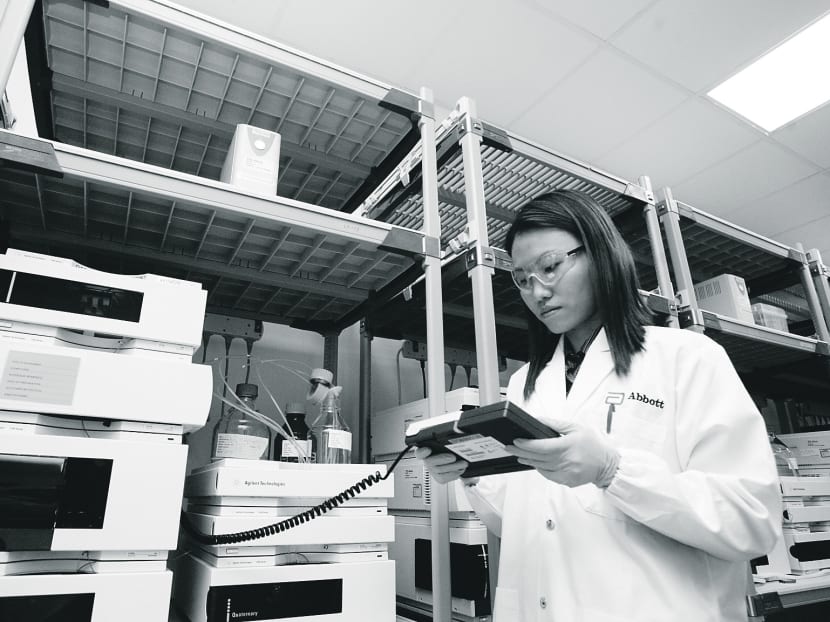Why countries need to invest more in research
“Hello, is that Dr Adam?” There was urgency and desperation in the voice. It was a cold call from a Singaporean scientist in his early 30s who was one of around 200 applying to join the laboratory where I work.

Singapore is still striving to nurture companies that compare with the Bay Area’s Apple, with an annual research and development budget of
US$3.4 billion (S$4.24 billion).
TODAY FILE PHOTO
“Hello, is that Dr Adam?” There was urgency and desperation in the voice. It was a cold call from a Singaporean scientist in his early 30s who was one of around 200 applying to join the laboratory where I work.
While we are from different fields, he was clearly a researcher with many accomplishments from his eight years in the United States — in both academia and biotechnology. His recent return from the US seemed in part due to the shrinking opportunities there. While the US still leads the world in both high-tech industries and scientific research, sticking to its current path of underfunding would eventually lead it into a dark valley.
UNDERFUNDING OF RESEARCH IN THE U.S.
Research and innovation create wealth over the long run. They allow humans to turn sand into silicon microchips and mould into antibiotics. In the 1990s, Clinton-era economic expansion was accompanied by a doubling in the budget for the US National Institutes of Health (NIH). This increase was motivated by evidence that investment into biomedical research creates knowledge, good ideas and smart people that improve healthcare practice and enrich the economy.
However, a variety of governance problems in the Bush-Obama era have resulted in a marked real-dollar decline in biomedical funding. The budget of the NIH has stagnated just around US$30 billion (S$37.4 billion) since 2003, leading to the shrinking of the purchasing power of biomedical labs by about one-quarter in the past decade. Over the same period, grant award rates have fallen from more than 30 per cent to less than 17 per cent, forcing the average professor to write and submit more than five grants before any research gets done.
This dramatic decline coincides with a “baby boom” of recent PhDs who have graduated since the NIH budget was doubled in the 1990s.
Unsurprisingly, the unemployment rate at graduation for US life sciences PhDs was about 35 per cent in 2011. Professors of note have stopped their lab’s operations after their last grant renewal was declined. Now the US may lose a generation of scientists who will be forced to leave research and science education. A poster boy of this is Dr Douglas Prasher, found driving a shuttle van the week that his former collaborator was awarded a Nobel Prize in chemistry for work they did together.
The US is starving the research that will reveal new understanding, yield new technologies and train the next generation of scientifically minded citizens. These three things — insight, technology and smart people — are the “seed corn” of innovative industries that improve lives and build economies. Sadly for Americans — and for those of us who admire the brilliance of American science — the US is undermining its seed corn by underfunding research. Without this seed corn, how will it nurture and harvest future technology-driven growth and well-being?
SINGAPORE’S APPROACH
Fortunately, Singapore has taken the exact opposite approach. Just as America let funding slide, Singapore ramped up public spending on research and development from S$1.3 billion in 2002 to S$2.8 billion in 2012. This strategy has helped draw many high-quality laboratories and thousands of new PhD scientists from the US (and elsewhere) here. A government report shows that in the decade to 2012, business spending on research and development has more than doubled (to S$4.4 billion), as has sales revenue of products developed in Singapore (to S$21 billion).
Singapore’s research-driven economy is not yet at the level of the San Francisco Bay Area or Massachusetts, but these places have funded research for over a century and have built golden research brands (e.g. MIT, Stanford) that attract top talent from all over the world. Singapore is still striving to nurture companies that compare with the Bay Area’s Apple (with an annual research and development budget of US$3.4 billion) or Genentech (a drug company whose senior management is populated by former professors).
Perhaps the Republic can draw some lessons from two other nations with comparable populations and wealth — Switzerland and Israel. Both have strong innovation economies that grow out of robust public funding and centuries-old traditions in fundamental science. Together they boast dozens of Nobel Prizes between them.
Israel is particularly outstanding: Its annual research and development intensity (investment as a percentage of gross domestic product) is nearly twice Singapore’s.
Is it far-fetched for Singapore to try to build an innovation environment that could rival these countries? Given Singapore’s remarkable progress in this area in the past decade, I believe Singapore has a real chance of succeeding. What lessons can we draw from the desperate call from the accomplished but jobless Singaporean scientist? To prevent a brain drain such as the one we are seeing in the US now, Singapore will do well to maintain its wise strategy of growing more innovation-economy seed corn.
ABOUT THE AUTHOR:
Adam Claridge-Chang is an assistant professor with the neuroscience and behavioural disorders programme at the Duke-NUS Graduate Medical School. His research is on the neuroscience of memory and emotional disorders.






